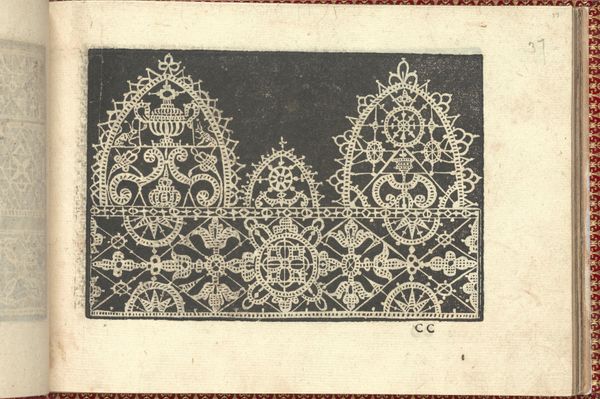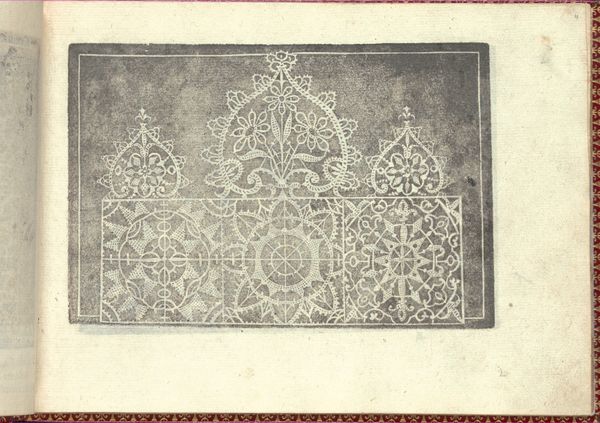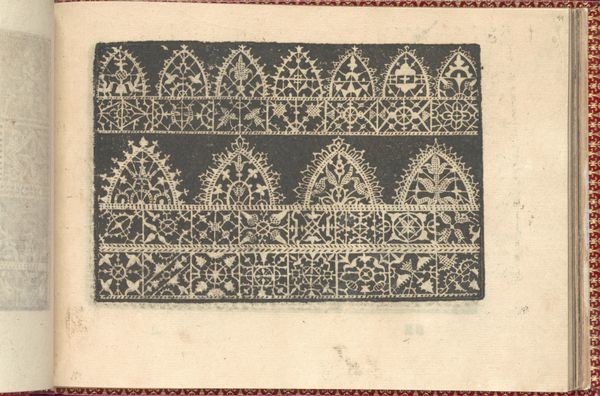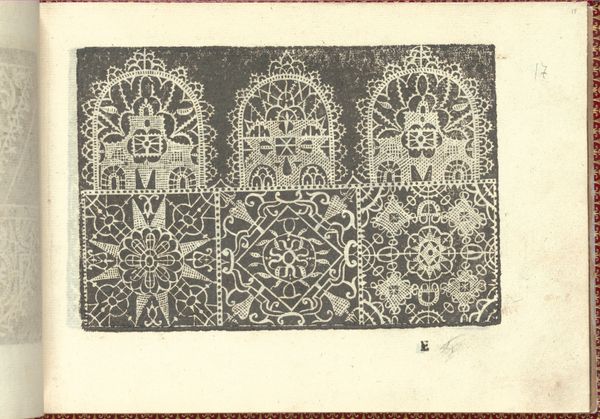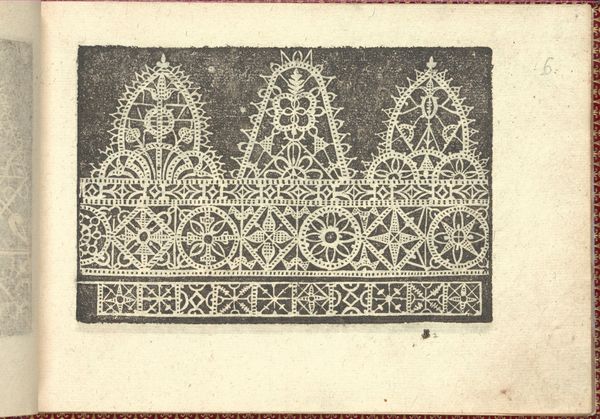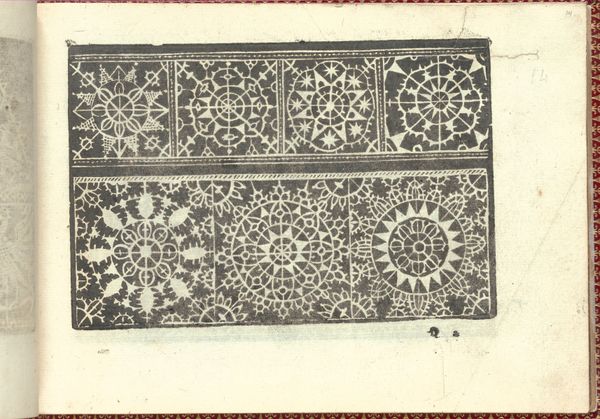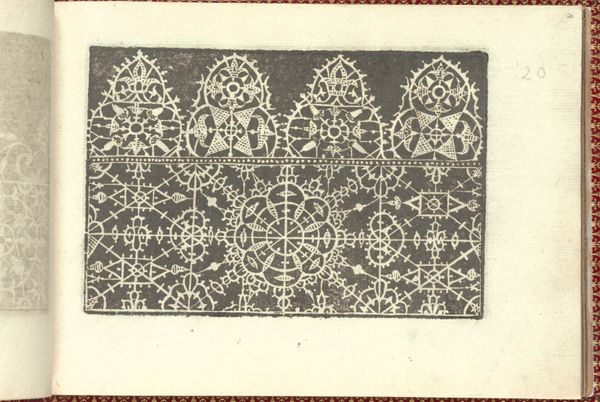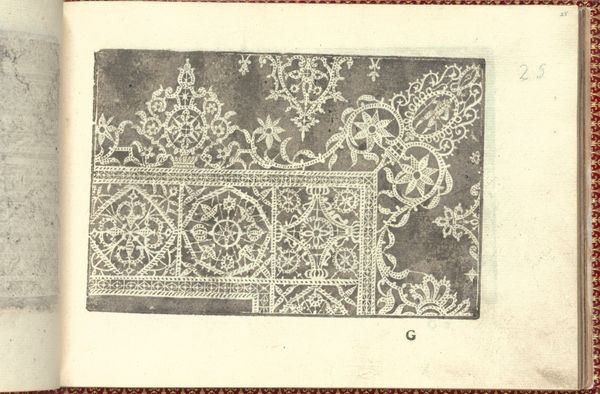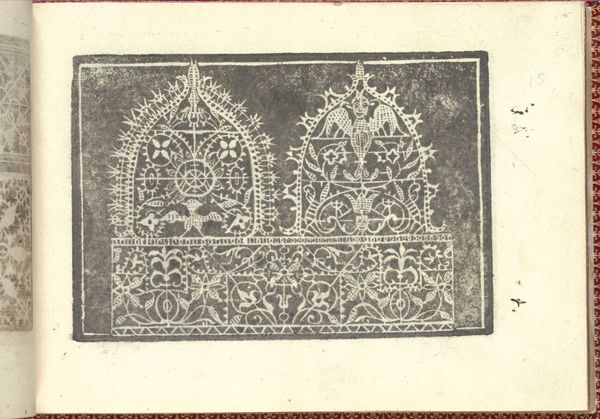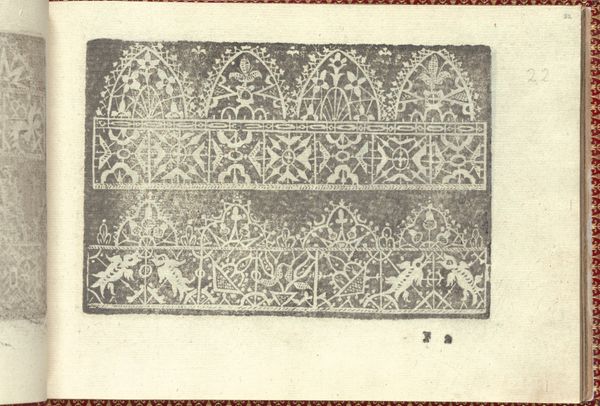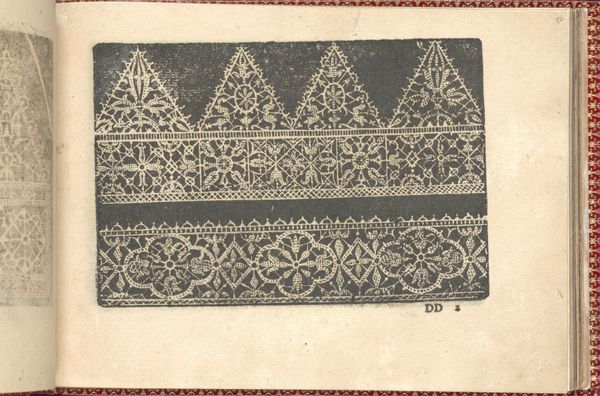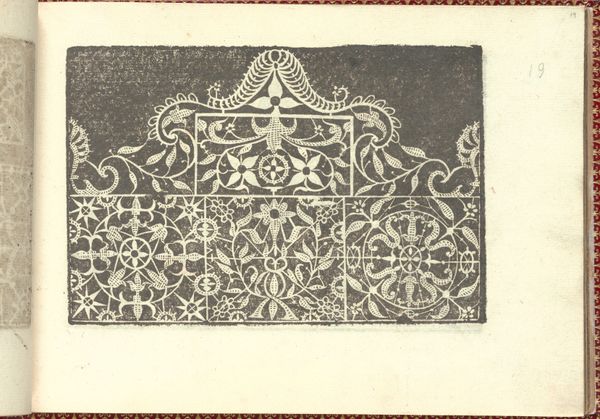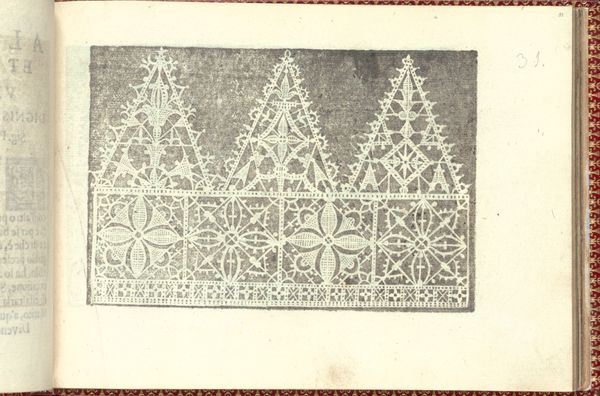
Corona delle Nobili et Virtuose Donne: Libro I-IV, page 9 (recto) 1601
0:00
0:00
drawing, ornament, print, intaglio
#
drawing
#
ornament
# print
#
intaglio
#
11_renaissance
#
italian-renaissance
Dimensions: Overall: 5 1/2 x 7 11/16 in. (14 x 19.5 cm)
Copyright: Public Domain
Curator: This intricate intaglio print from 1601 is a page from Cesare Vecellio’s “Corona delle Nobili et Virtuose Donne,” a pattern book featuring designs for lace. It’s currently held here at the Metropolitan Museum of Art. What strikes you initially? Editor: Well, there is a density to the repetitive patterns that at first seems overwhelming. Yet, somehow the individual motifs—the stars and flower-like shapes—manage to project a kind of fragile beauty despite their mechanistic organization. Curator: Precisely! Consider this wasn’t just decorative. It served as a very functional tool for lacemakers. Each design offers instructions, so to speak, for creating complex patterns from thread and needle. This makes visible the labor and skills of the artisan, specifically the women of the Italian Renaissance, often overlooked by history. Editor: Right, and it emphasizes something essential about Renaissance society, where a highly developed economy drove not only conspicuous consumption but also elaborate material cultures touching all social levels. Were these designs exclusively for an aristocratic clientele? Curator: Not necessarily, lace held economic and social weight far beyond the nobility, since making and selling lace were sources of income for countless women. Vecellio even states his desire for the dissemination of his book, believing this to aid "those who take pleasure in such things," so the possibility for wider participation was very real. Editor: The book title hints at a construction of female nobility and virtue which may in turn point to the fact that lacemaking was understood to provide a dignified path for single women, nuns and those from the lower classes to participate in craftwork as labor. I mean the repetition and constraint must have also had an effect on the daily experiences of these women. Curator: Absolutely. This challenges our traditional concept of art by illustrating art’s deep ties to work, economy, and gender identity in the Renaissance, it exposes the social frameworks of the time through the lens of everyday craft. Editor: Thinking about art as directly connected to economics, to the realities of the labor behind its making really opens our perception. It shows how deeply implicated art always is, even seemingly ornamental works such as these lace patterns. Curator: For me, revisiting this kind of historical material always sparks the curiosity to delve more and more into how intertwined life, work and craft were centuries ago. Editor: Exactly. Bringing such context into focus helps us perceive art’s continuous conversations with history.
Comments
No comments
Be the first to comment and join the conversation on the ultimate creative platform.
